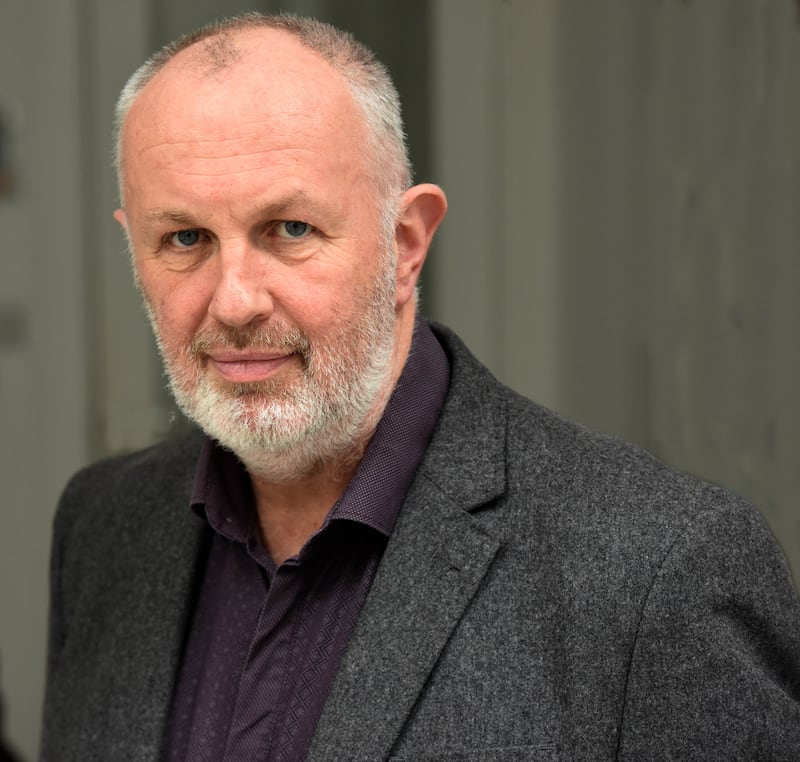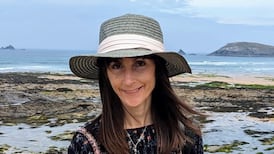On October 12th, 1971, Una Lynskey disappeared as she walked home from work. She was living with her family on Porterstown Lane near Ratoath, Co Meath and working in the Land Commission offices in Dublin city centre. After she got off the bus from the city with her cousin, Ann Gaughan, she set off across the lane on the 15-minute walk to her home. The alarm was raised when she didn’t arrive. She was 19, in love, and on the cusp of spreading her wings.
Lynskey was one of a family of 12, but the community in Porterstown Lane was like a wider family as most of the homes on the lane were occupied by “Westies” who had been moved to the area from the west of Ireland. In the investigation that followed Lynskey’s disappearance, the close-knit nature of the community, and its sense of displacement, contributed to the gardaí believing they had identified the correct suspects in what was quickly considered a serious crime. Equally, many locals believed the direction of the garda investigation was fuelled by perceived prejudice against the “Westies”.
The ‘Westies’ were beneficiaries of a programme run by a state agency, the Land Commission. As it happened, this was the same body for whom Lynskey was working at the time of her disappearance. The programme was designed to entice people from “congested” holdings in the barren western shoreline across the country to the relatively bountiful lands in the east. The small holdings in the west dated from the late 19th century and were often unviable. The programme, initiated by the first Free State government, was an experiment designed to better the lives of those with little prospect of eking out a living in parts of Connacht. When Fianna Fáil came to power in 1932, the programme was ramped up further.
Applicants would surrender their holdings in the west to the Land Commission and be awarded small farms, typically of 20 to 25 acres, mainly in counties Meath or Kildare. Over time, little pockets of Gaeltachts, particularly in Meath, would sprout up, largely as a result of the internal migration of the “Westies”, “colonists”, or “Gaeltachts”, as they were known. Some of these areas remain Irish-speaking to this day.
READ MORE
In 1940, the commission purchased a large property in Porterstown Lane and distributed it in parcels of 20 to 25 acres to families from the Erris peninsula in Co Mayo. Among these were Una’s father, Pat Lynskey, her cousin Ann Gaughan’s father, Pat Gaughan, and the parents of two of the three young men whom the gardaí believed were responsible for Una Lynskey’s disappearance, 20-year-old Martin Conmey and 19-year-old Marty Kerrigan. The third suspect, 23-year-old Dick Donnelly, was unusual in the area in that his parents were not from the west.
Since the 1930s, there had been fear and suspicion locally of these western families crossing the country to their new home, not unlike the kind of suspicion in some quarters today of refugees from the developing world. This was felt in Porterstown Lane but faded as the years passed and the families settled into the community. Pat Lynskey, for instance, referenced the sense of displacement he and others from the west had felt.
“We came here as migrants with seven other families from Co Mayo, the Belmullet area,” he would recall in the aftermath of his daughter’s disappearance. “While the local people, the Co Meath people, never accepted us, they never did us any harm,” he said.
The murder squad arrived in Porterstown Lane 48 hours after Una Lynskey disappeared. Already there was a strong suspicion she may have been murdered. During their initial enquiries the gardaí discovered that the three young men had crossed the lane in a car around the time she went missing. The precise time that the men were in the lane would be crucial to all that followed.
According to the three, they entered the 2.4km-long lane from the opposite side that Lynskey had entered it at least 15 minutes after her, so they couldn’t have met her. Initially, the gardaí had no evidence to back up their suspicions of the men. Statements taken from locals all tended, to a greater or lesser degree, to corroborate the three men’s version of the facts. Yet the gardaí went back repeatedly to these witnesses until narratives changed to fit the garda theory. One suspicion the investigating gardaí appeared to have harboured was that the locals were covering up and exercising a form of omerta in dealings with the police, even though the victim was also from the community.

The three men were arrested and taken to Trim Garda station where they were interrogated. There is a body of evidence that they were assaulted in custody in an effort to extract confessions and reveal where Lynskey might be. The man overseeing the investigation, Det Sgt John Courtney, would go on to feature in a number of cases in the 1970s and 1980s where assaults in custody were alleged.
What emerged from interrogations were two flimsy and disjoined elements of confessions from Conmey and Kerrigan. Both said afterwards that they had merely signed statements under extreme duress and intimidation, and they knew absolutely nothing about Lynskey’s disappearance.
Alleged obstinance on their part, the gardaí believed, was down to the “Westie” mentality. They couldn’t be broken because they were hardy and devious, features that some locals had attributed years earlier to the families who migrated from Connacht.
Lynskey’s body was discovered in December 1971 near Tibradden in the Dublin mountains.
In the two months following Lynskey’s disappearance, the community in Porterstown Lane was rent asunder. At the end of it all, two of the families would be bereaved, and another subjected to seeing their loved one imprisoned for a crime he didn’t commit. Major questions would arise about the garda handling of the case and whether they allowed prejudice to seep into their investigations. These questions would continue to haunt the murder squad in the decades that followed, but back in Porterstown Lane a community that was tight and displaced from the west would never be the same again.
Conmey and Donnelly were convicted of Ms Lynskey’s manslaughter and jailed for three years. Donnelly successfully appealed his conviction while Conmey served his full sentence. In 2010, Conmey’s conviction was successfully appealed and the conviction was declared a miscarriage of justice. A short time after Lynskey’s body was found, Kerrigan was bundled into a car in Ratoath. The next day his body was found at Tibradden, Rathfarnham, Dublin close to where Lynskey’s body had been found.
- Mick Clifford is special correspondent with the Irish Examiner. Who Killed Una Lynskey? is published by Sandycove
- Sign up for push alerts and have the best news, analysis and comment delivered directly to your phone
- Join The Irish Times on WhatsApp and stay up to date
- Listen to our Inside Politics podcast for the best political chat and analysis












